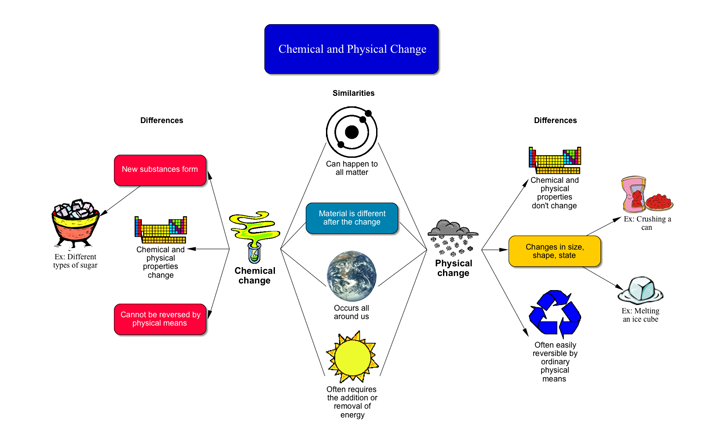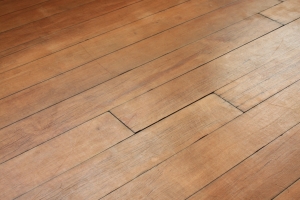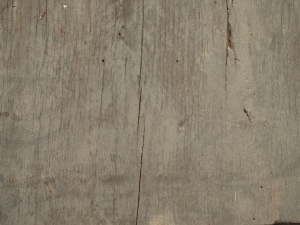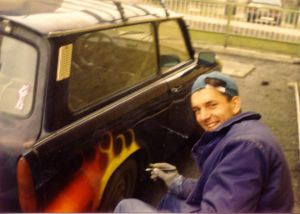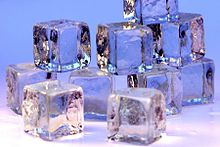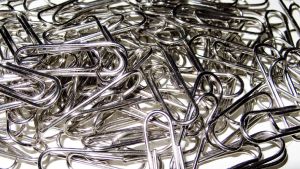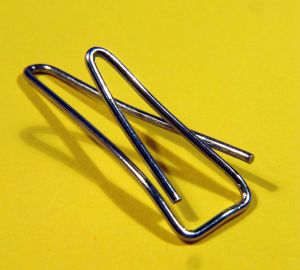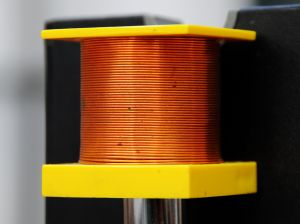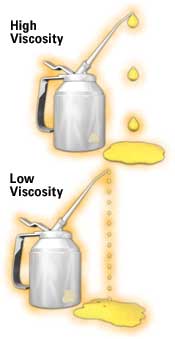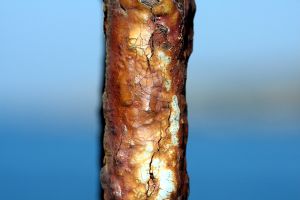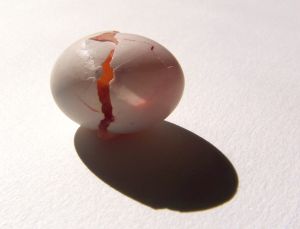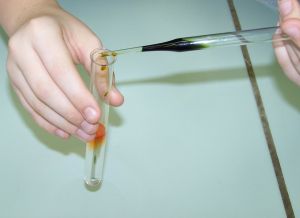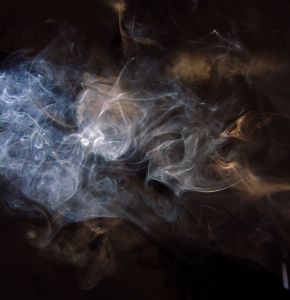Chemical Changes vs. Physical Changes
The difference between a physical reaction and a chemical reaction is composition. In a chemical reaction, there is a change in the composition of the substances in question; in a physical change there is a difference in the appearance, smell, or simple display of a sample of matter without a change in composition. Although we call them physical “reactions,” no reaction is actually occurring. In order for a reaction to take place, there must be a change in the elemental composition of the substance in question. Thus, we shall simply refer to physical “reactions” as physical changes from now on.
Introduction
Physical changes are limited to changes that result in a difference in display without changing the composition. Some common changes (but not limited to) are:
- Texture
- Color
- Temperature
- Shape
- Change of State (Boiling Point and Melting Point are significant factors in determining this change.)
Physical properties include many other aspects of a substance. The following are (but not limited to) physical properties.
- Luster
- Malleability
- Ability to be drawn into a thin wire
- Density
- Viscosity
- Solubility
- Mass
- Volume
Any change in these physical properties is referred to as a physical change. For further information, please refer to Properties of Matter.
Chemical changes, on the other hand, are quite different. A chemical change occurs when the substance’s composition is changed. When bonds are broken and new ones are formed a chemical change occurs. The following are indicators of chemical changes:
- Change in Temperature
- Change in Color
- Noticeable Odor (after reaction has begun)
- Formation of a Precipitate
- Formation of Bubbles
Note: When two or more reactants are mixed and a change in temperature, color, etc. is noticed, a chemical reaction is probably occurring. These are not definite indicators; a chemical reaction may not be occurring. A change in color is not always a chemical change. If one were to change the color of a substance in a non-chemical reaction scenario, such as painting a car, the change is physical and not chemical. This is because the composition of the car has not changed. Proceed with caution.
Common Physical Changes
Texture
The texture of a substance can differ with a physical change. For example, if a piece of wood was sanded, waxed, and polished, it would have a very different texture than it initially had as a rough piece of wood. As you can see, the texture of the finished wood is much smoother than the initial grainy wood.
Finished Wood
Rough Wood
Color
The changing of color of a substance is not necessarily an indicator of a chemical change. For example, changing the color of a metal does not change its physical properties. However, in a chemical reaction, a color change is usually an indicator that a reaction is occurring. The guy painting the metal car is not changing the composition of the metallic substance.
Painting a Car
Temperature
Although we cannot see temperature change, unless if a change of state is occurring, it is a physical change.
Hot Pan
One cannot see the pan physically changing shape, color, texture, or any of the other physical properties. However, if one were to touch the pan, it would be incredibly hot and could cause a burn. Sitting idle in a cupboard, this pan would be cold. One cannot assess this change only through visual exposure; the use of a thermometer or other instrument is necessary.
Shape
The shape of an object can be changed and the object will still remain true to its chemical composition. For example, if one were to fold money, as shown by the figure below, the money is still chemically the same.
Origami Money
Change of State
The change of state is likewise a physical change. In this scenario, one can observe a number of physical properties changing, such as viscosity and shape. As ice turns into water, it does not retain a solid shape and now becomes a viscous fluid. The physical “reaction” for the change of ice into liquid water is:
H2O(s)→H2O(l)
The following are the changes of state:
|
Solid → Liquid |
Melting |
|
Liquid → Gas |
Vaporization |
|
Liquid → Solid |
Freezing |
|
Gas → Liquid |
Condensation |
|
Solid → Gas |
Sublimation |
- If heat is added to a substance, such as in melting, vaporization, and sublimation, the process is endothermic. In this instance, heat is increasing the speed of the molecules causing them move faster.
- If heat is removed from a substance, such as in freezing and condensation, then process is exothermic. In this instance, heat is decreasing the speed of the molecules causing them move slower.
Physical Properties
Luster
The luster of an element is defined as the way it reacts to light. Luster is a quality of a metal. Almost all of the metals, transition metals, and metalloids are lustrous. The non-metals and gases are not lustrous. For example, oxygen and bromine are not lustrous. Shown below is are lustrous paper clips.
Lustrous Paperclips
Malleability
Malleability is also a quality of metals. Metals are said to be malleable. This means that the metals can deform under an amount of stress. For example, if you can hit a metal with a mallet and it deforms, it is malleable. Also, a paperclip can be shaped with bare hands.
Bent Paperclip
The image shows the malleability of a certain metal as stress is applied to it.
Ability to be drawn into a thin wire
In materials science, this property is called ductility. For example, raw copper can be obtained and it can be purified and wrapped into a cord. Once again, this property is characteristic of mainly metals, nonmetals do not possess this quality.
Copper Wire
Density
The density of an object is its mass divided by its volume (d=m/v). A substance will have a higher density if it has more mass in a fixed amount of volume. For example, take a ball of metal, roughly the size of a baseball, compressed from raw metal. Compare this to a baseball made of paper. The baseball made of metal has a much greater weight to it in the same amount of volume. Therefore the baseball made out of metal has a much higher density. The density of an object will also determine whether it will sink or float in a particular chemical. Water for example has a density of 1g/cm3. Any substance with a density lower than that will float, while any substance with a density above that will sink.
Oil Sinking in a Glass of Water
Viscosity
Viscosity is defined to be the resistance to deformation of a particular chemical substance when a force is applied to it. In the example below, one can see two cubes falling into two different test tubes. The upper substance shows a violent reaction to the dropping of the cube. The lower substance simply engulfs it slowly without much reaction. The upper substance has a lower viscosity relative to the lower substance, which has very high viscosity. One may even think of viscosity in terms of thickness. The substance with more thickness has higher viscosity than a substance that is deemed “thin.” Water has a lower viscosity than honey or magma, which have relatively high viscosities.
Viscosity of Fluids
Common Chemical Changes
The follow are all indicators of chemical reactions. For further information on chemical reactions, please refer to Chemical Reactions.
Change in Temperature
A change in temperature is characteristic of a chemical change. During an experiment, one could dip a thermometer into a beaker or Erlenmeyer Flask to verify a temperature change. If temperature increases, as it does in most reactions, a chemical change is likely to be occurring. This is different from the physical temperature change. During a physical temperature change, one substance, such as water is being heated. However, in this case, one compound is mixed in with another, and these reactants produce a product. When the reactants are mixed, the temperature change caused by the reaction is an indicator of a chemical change.
Figure: Violent Reaction (Fireworks) with heat as a product
As an example of a exothermic reaction, if Fe2O3 is mixed with Al and ignighted (often with burning Mg), then the thermite reaciton is initiated
Fe2O3+2Al→2Fe+Al2O3+Heat
This reaction generates heat as a product and is (very) exothermic.
However, physical changes can be exothermic or endothermic. The melting of an ice cube, which is endothermic, is a change in a physical property and not composition. Thus, it is a physical change.
Change in Color
A change in color is also another characteristic of a chemical reaction taking place. For example, if one were to observe the rusting of metal over time, one would realized that the metal has changed color and turned orange. This change in color is evidence of a chemical reaction. However, one must be careful; sometimes a change in color is simply the mixing of two colors, but no real change in the composition of the substances in question.
Metal Rusting
The reaction above is that of the rusting of iron.
4Fe+3O2+6H2O→4Fe(OH)3
Noticeable Odor
When two or more compounds or elements are mixed and a scent or odor is present, a chemical reaction has taken place. For example, when an egg begins to smell, (a rotten egg) a chemical reaction has taken place. This is the result of a chemical decomposition.
Spoiled Egg
Formation of a Precipitate
The formation of a precipitate may be one of the most common signs of a chemical reaction taking place. A precipitate is defined to be a solid that forms inside of a solution or another solid. Precipitates should not be confused with suspensions, which are solutions that are homogeneous fluids with particles floating about in them. For instance, when a soluble carbonate reacts with Barium, a Barium Carbonate precipitate can be observed.
Test Tube
Reaction:
Ba2+(aq)+CO2−3(aq)→BaCO)3(s)
For further information, please refer to Classification of Matter.
Formation of Bubbles
The formation of bubbles, or rather a gas, is another indicator of a chemical reaction taking place. When bubbles form, a temperature change could also be taking place. Temperature change and formation of bubbles often occur together. For example, in the following image, one can see a gas spewing. This is the formation of a gas.
Gas Formation
However, most reactions are much more subtle. For instance, if the following reaction occurs, one may notice Carbon Dioxide bubbles forming. If there is enough Hydrochloric Acid, bubbles are visible. If there isn’t, one can’t readily notice the change:
Na2CO3+2HCl→2NaCl+H2O+CO2
Physical and Chemical Changes
To learn more about topics in Chemistry Join are Online Live Multimedia Classes.
Open the following link to get your registered today for a free demo class:

